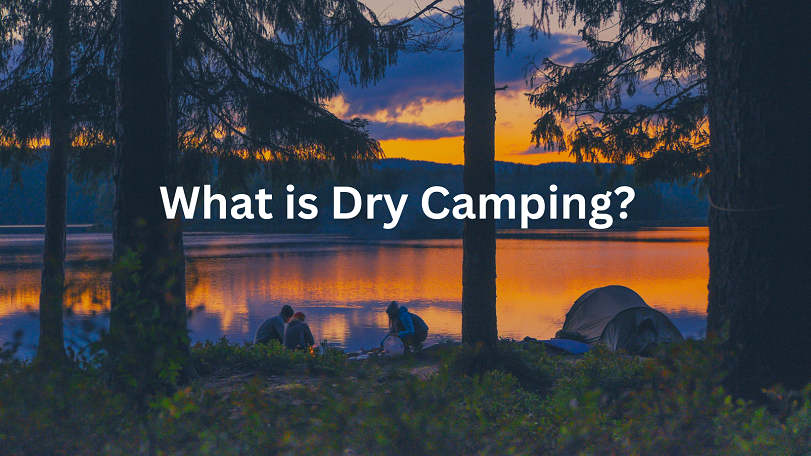Dry camping, sometimes called boondocking, is a popular way to camp while getting back to nature. When you go dry camping, you are camping without hookups for electricity, water, or sewer. It’s just you and the great outdoors! As a travel blogger and editor who loves the freedom of roughing it, I’m excited to share everything you need to know about dry camping.
What is Dry Camping?
Dry camping simply means camping without electrical, water, or sewer hookups. When you go dry camping, you rely on battery power, water tanks, and self-contained waste systems. Dry camping is also known as boondocking, primitive camping, dispersed camping, and self-contained camping.
The key is being fully self-reliant and not relying on any external hookups or amenities. You need to bring everything you will need with you and be able to sustain yourself for the duration of your stay. This appeals to RVers, vanlifers, and tent campers who want that off-the-grid experience.
Why Choose Dry Camping?
There are several great reasons to give dry camping a try:
- Get closer to nature – Without hookups, you can camp in more remote and serene locations away from crowded campgrounds. You don’t have to limit yourself to designated camping areas.
- Save money – No campground fees! Boondocking gives you free lodging.
- Enjoy solitude – Dry camping allows you to enjoy the peacefulness of nature without noisy neighbors.
- Flexibility – You can stay as long as you want and move to new locations freely.
- Adventure – Embrace the nomadic lifestyle and freedom of boondocking off the beaten path.
How to Prepare for Dry Camping
Dry camping requires some preparation and self-sufficiency. Here are some tips:
- Know your electrical needs – Calculate your expected power usage and ensure your batteries can sustain you. Upgrade to solar panels, generators, or extra batteries if needed.
- Stock up on water – Bring enough water for all your needs – drinking, cooking, washing, etc. Or plan to collect or filter water onsite.
- Manage waste – Have tools to collect trash and recyclables. Ensure holding tanks can contain bathroom and greywater waste.
- Research location – Pick a suitable dry camping site with amenities like public restrooms or water fill stations nearby if needed.
- Review rules & regulations – Know the local laws, permissible length of stay, and any fire restrictions.
- Pack properly – Bring all needed camping gear and survival basics like first aid kits.
Where to Go Dry Camping
You can dry camp just about anywhere that allows overnight parking or camping. Some top spots include:
- Public Lands – National forests and BLM land offer thousands of boondocking sites for free. Stay for up to 2 weeks.
- State & National Parks – Many parks allow dry camping in certain areas or require a inexpensive permit.
- Bureau of Reclamation Sites – Lakeside camping without hookups at many reservoirs.
- LTVA – Long Term Visitor Areas in the Southwest desert allow months of free dry camping.
- Roadside Stopovers – Rest areas, truck stops, Cracker Barrels, Walmarts, Cabela’s, etc. often permit free overnight parking.
- Private Campgrounds – Some campgrounds offer “no hookup” primitive sites.
I always use helpful apps like Campendium, FreeRoam, and Ultimate Campgrounds to find boondocking spots suitable for my RV or tent. With a little research, you can find amazing free dry camping locations across the US.
Dry Camping Essentials
To comfortably dry camp, be sure you have:
- Sufficient fresh water supply and containers
- A way to replenish water (jugs, filtration)
- Extra batteries & power sources
- Generator (optional)
- Solar panels & charge controller (optional)
- Portable stove, grill, camp kitchen setup
- Firewood if fires are allowed
- Flashlights & lanterns
- First aid kit
- TP, sanitation/hygiene products
- Waste water containers & sewage hose
- Garbage bags
- Cooler & ice
- Camp chairs, table, shade structures
- Games, books, music
- Navigation & communication devices
Having the right gear makes boondocking safe, affordable and fun for everyone. Shop camping stores or online for any needed supplies before your trip.
Dry Camping Etiquette & Safety
To be a respectful and responsible dry camper:
- Obey all posted rules and permit requirements
- Never overstay your welcome
- Keep noise levels low, especially at night
- Leave no trace – pack out all trash and waste
- Protect wildlife and plants by staying on designated roads and sites
- Be self-contained and use restrooms if available
- Use a generator sparingly and only when allowed
- Keep fires contained and always put them out fully
- Let someone know where you are going
- Conserve resources like water and energy
- Respect privacy of other campers
- Have emergency/medical plans in place
Following dry camping etiquette helps protect natural areas and ensures our right to boondock on public lands. Always camp safely.
Enjoy the Freedom of Dry Camping!
I hope this guide gives you the tips and inspiration to start enjoying dry camping / boondocking. Getting back to basics and soaking up nature is such a rewarding experience. With a little preparation, you can camp almost anywhere for free and have amazing adventures. Let me know about your favorite dry camping destinations and stories in the comments!
